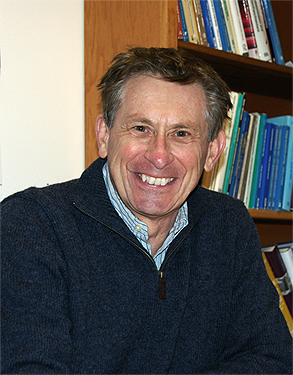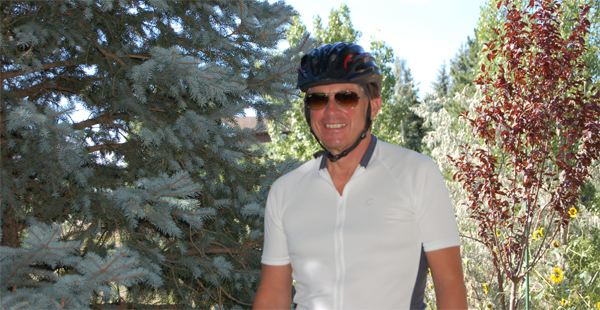Five questions for Stan Deetz
In some 20 nations around the world, Stan Deetz has worked to be an agent of change. He pushes for better collaboration and decision-making to promote success in businesses and communities. As economies and technologies evolve, and the complexities of the world intensify, the quality of human interaction becomes more and more important.
“Deeper forms of collaboration at all levels of the organization and across members of the community is important, otherwise, they don’t get anything close to the kinds of changes they need,” says Deetz, a professor in the University of Colorado Boulder Graduate School, director of the Center for the Study of Conflict, Collaboration and Creative Governance and the Peace and Conflict Studies Program, and a President’s Teaching Scholar.
The best companies, Deetz says, are beginning to understand that they have to value their workforce and understand that key forms of expertise exist throughout the institution, not just at the top. That kind of logic needs to filter through the entire company in order to foment real change, he says.
Late last year, Deetz was invited to be part of a group that traveled to Japan to meet with top executives and facilitate cultural change at TEPCO, the company that owns the crippled Fukushima nuclear power plant. “They are in a complex, difficult position with long-term problems,” he says. “The accident was the result of human and organizational problems, and I give the company credit for taking seriously its own need for change.”
While he truly loves teaching, he has thought about starting a private institute so that he might spend all of his time on “change efforts.” Until then, he finds that many people reach out to him for help with their collaboration processes and to learn to make better decisions. “This is not a planned career. I answer phone calls and my life changes. I get great joy from helping others resolve conflict and build healthier organizations. People just don’t often have good help in learning how to do those things.”
1. Much of your research focuses on organizational communication, especially decision-making and collaboration. What do you see as some of the bigger stumbling blocks to effective collaboration?
The most obvious difficulty is that people think that they are right and/or don’t want to give up power. More importantly, people have few models of how to communicate and collaborate well. They know about frustrating, nonproductive meetings, but they don’t realize that their models of ways to discuss issues are flawed; hence they don’t get the help needed to do it well. Just about every study of quality decision-making, productivity, and even education, favors quality collaborative processes. Yet we spend billions on technology and strategy and don’t invest in improving collaboration. We just have more of the same bad meetings, hoping for different results. The best quick advice I can give is to get facilitation as often as possible and begin the process of learning fundamentally different interaction skills. People get what their organizations and processes are designed to do; if you want something different, you have to use different designs.
I’ve seen organizations make remarkable changes, absolute turnarounds. Some do this because they are in crisis mode, suddenly losing their market, for instance. Others are more proactive. Many companies, even big traditional companies like Coca-Cola and McDonald’s, have been able to constantly be on the cutting edge in order to survive. They understand the need to be more collaborative on decision-making and be on the forefront of including new ideas.
The best companies are beginning to realize that the culture has to value the workforce. In order to get the high levels of creativity and commitment needed today, we must use the intelligence of all in the organization.
2. I understand what you mean about bad meetings, but can we really ever change what is embedded in our culture?
I’m optimistic. The superficial things disappear when you have real decisions you have to make. I’ve watched groups fight over policy issues, but when it gets down to making concrete choices about what needs to be done, people are really pretty smart. People are reluctant to operate differently and we have a lot of bad meetings. To me, it’s absolutely remarkable that we live in the greatest democracy yet we hate meetings more than anything else. We should jump up every morning and be excited that we get to meet with people and make decisions, but we’re not. Unfortunately, we have some of the worst habits and some of the worst ideas about how we talk to each other. Meetings can be remarkable, exciting, and productive places, but it’s not something that magically happens; it has to be carefully designed and people have to be carefully trained, and sometimes this has to be done in opposition to entrenched powers. A lot of good conflict resolution skills never get taught, or when the skills are taught, they’re taught pretty badly. No one is teaching people how to productively meet with each other and that has to be a priority.
3. This fall, you journeyed to Japan to the Fukushima nuclear plant, the site of the 2011 earthquake and tsunami and the resulting radiation spill. What were the circumstances leading to your being invited there? What impression did you come away with?
I have been working for years with change efforts using collaborative processes in business and other organizations around the world, but never in the nuclear field. After the events at Fukushima, and more importantly, once the tragedy there was defined as resulting from primarily human and organization problems, I received a call from the International Atomic Energy Agency (IAEA, the UN agency for all things nuclear) asking me to become involved with working with cultural change in nuclear plants around the world, and planning for the dozens of new plants being built. I was invited to South Africa, Russia, and back and forth to the headquarters in Vienna.
Ultimately I was asked to go to Japan to work to facilitate change at TEPCO. As part of that, I toured the plants. It was overwhelming and emotionally impactful in so many ways -- seeing the sheer extent of the damage and complexity of the cleanup; the continuing problems of dealing with the water and moving the spent rods; the towns, clean and normal-looking but without people; and the tales of the workers’ experiences during the events.
The company access and desire for change was amazing. We spent three-and-a-half days with the top 30 executives. l give the company credit for taking seriously its need for a change. They had problems in the past, and they thought they had dealt with it, but they had dealt with it in superficial ways. They hadn’t really reformed the company culture. The issues reverberate through the entire industry.
Reforming the culture in these nuclear facilities is extraordinarily important. For all the mistakes they made, they also are a model of how to change.
4. You also are director of the Center for the Study of Conflict, Collaboration and Creative Governance and the Peace and Conflict Studies Program. What is the center’s mission?
The center was developed with a recognition that -- with things like growing interdependence, fresh water shortages, the numerous effects of climate change and so on -- difficult conflicts were likely to increase and that we as a society do not have the collaborative skills and governance and decision-making capacity to make the most mutually beneficial decisions. The university was capable of addressing part of this need. While we are still very new, we have sponsored conferences and programs that have led to collaborative peace projects, improved inter-sector decision making, and developed a network with scholars in Brazil working with environmental governance.
5. How did you choose this career path and why do you love teaching?
I was very much a hick farm kid from Indiana and had little sense about education or professions. One of my college professors and the class he taught were very influential as a model for being a quality human being and having impact. I had decided that I did not want to go to law school and he suggested grad school. From there all was history, although I’m not sure going into academics was the best choice. Basically I was suddenly broke at 24 with a Ph.D. What do you do?
I have loved working with students and the virtual candy shop of ideas and opportunities that comes with a university. I’m a President’s Teaching Scholar and my greatest joy and pride has come from teaching. It’s the pure pleasure of watching people learn, especially because learning was so important to me at that age. Teaching is about the relationships you develop with students and being engaged in their learning processes.
I’ve kept hundreds of hand-written thank you notes that I’ve gotten from students. I used to put them in a pile, but now I have them taped all along the top of the wall in my office. You think that the era of writing thank-you notes is dead, but it’s unbelievable how many I’ve gotten from students. It’s one of the great things to walk in my office every day and see all the notes from students, often from not having really done anything great for them -- give them career advice, a letter of recommendation or just talk to them about a problem. It’s a reminder every day of why I go there.



